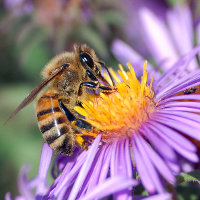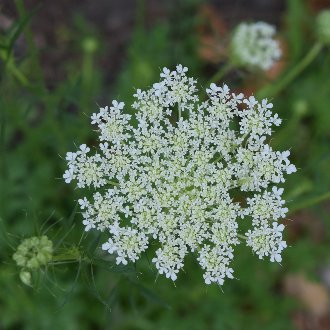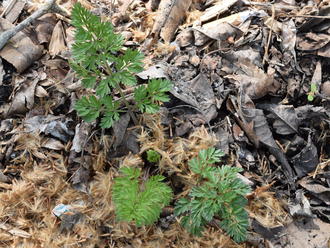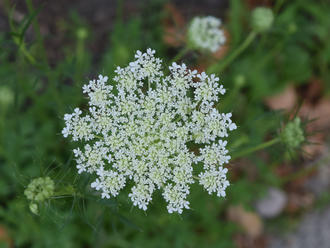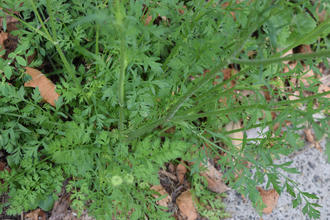Queen Anne's Lace (Daucus carota L.)
Also known as European wild carrot, bird's nest, bishop's lace.
↑Summary
Native to Europe and southwest Asia, and introduced in North America and other regions.
↑Range - Expand
| Legend | Color |
| Introduced | |
| Introduced or Not Present |
This tentative map is based on our own research. It may have limited data on Canada and/or Mexico, and there is some subjectivity in our assignment of plants as introduced vs. expanded. Read more in this blog post.
Although this plant occurs somewhere in each of these regions, it may only occur in a small part of some or all of them.
This species is also introduced in Canada and Mexico; we have yet to build these portions of its map.
↑Habitat
In North America, most common in anthropogenic habitats. Found in meadows, fallow fields, pastures, roadsides and railroads, vacant lots and industrial areas.
↑Uses
This species is widely cultivated as a food plant. Cultivated carrots havee been selected to have rather different characteristics from the wild plants, including larger, sweeter roots which are usually orange in color but can also be yellow, reddish, dark purple, or white like wild-type plants.
Although usually cultivated for its root, the stems and leaves are also edible. Wild plants are more likely to cause photosensitivity than cultivated plants.
Sometimes grown for its flower, or used in gardening as a companion plant.
↑Links & External Resources
• Daucus carota (Wild Carrot) | Illinois Wildflowers (About This Site)
• Daucus carota (Queen Anne's lace) | USDA PLANTS Database (About This Site)
• Daucus carota | Go Botany (About This Site)
• Daucus carota | Biota of North America Project (BONAP) (About This Site)
• Daucus carota | NatureServe Explorer (About This Site)
• Daucus carota | Missouri Plants (About This Site)
• Queen Anne's Lace | Maryland Biodiversity Project (About This Site)
• Daucus carota (Queen Anne's Lace) | Minnesota Wildflowers (About This Site)
• Daucus carota L. | Plants of the World Online (POWO) (About This Site)
• Daucus carota L. (Queen-Anne's Lace, Wild Carrot) | Digital Atlas of the Virginia Flora (About This Site)

